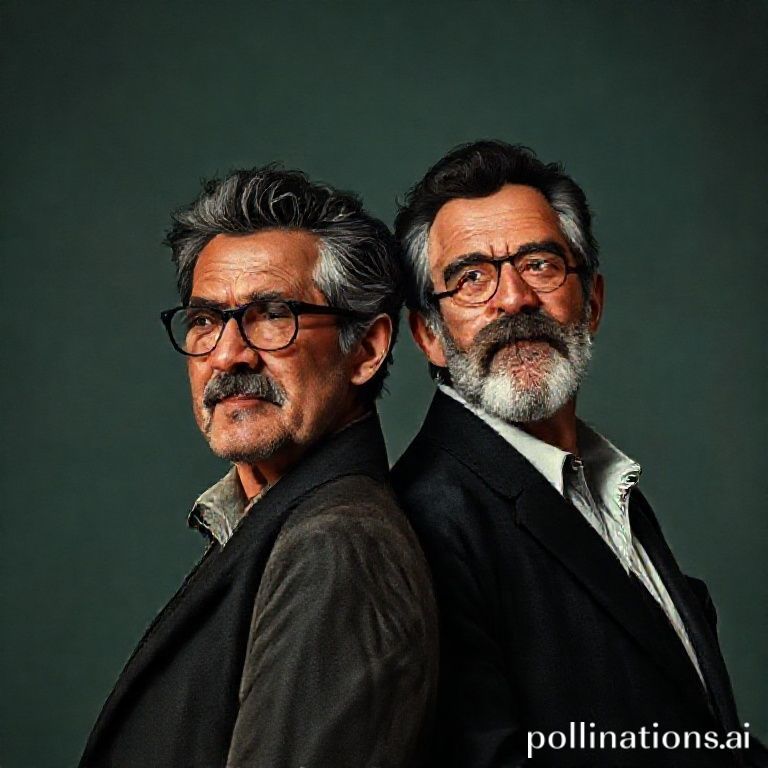Alfonso Cuarón and Guillermo del Toro. Just hearing these names conjures images of fantastical worlds, breathtaking cinematography, and stories that resonate deeply within the human spirit. These two Mexican filmmakers have not only conquered Hollywood but have also redefined the landscape of modern cinema. Their unique visions, often blending realism with elements of fantasy and horror, have captivated audiences worldwide, earning them critical acclaim and a dedicated following.
But what is it that makes their films so special? Is it the rich cultural tapestry they weave into their narratives? The technical brilliance that pushes the boundaries of filmmaking? Or perhaps it’s the profound humanity that shines through, even in the darkest of tales? Let’s delve into the cinematic universes of Alfonso Cuarón and Guillermo del Toro to explore the magic they bring to the silver screen.
Alfonso Cuarón: A Master of Visual Storytelling
Alfonso Cuarón is renowned for his meticulous attention to detail and his mastery of long takes, creating immersive and emotionally resonant experiences for the viewer. His films often explore themes of loss, family, and the complexities of human relationships, all while showcasing stunning visuals and innovative camera work.
Y Tu Mamá También (2001)
This coming-of-age road movie, starring Gael García Bernal and Diego Luna, is a raw and honest portrayal of friendship, sexuality, and class differences in Mexico. Cuarón’s use of improvisation and naturalistic dialogue creates a sense of authenticity that draws the audience into the lives of its characters. It’s a film that is both funny and poignant, capturing the spirit of youth with unflinching honesty.
Children of Men (2006)
A dystopian thriller set in a future where humanity faces extinction due to infertility, “Children of Men” is a visceral and relentlessly suspenseful film. Cuarón’s long takes, combined with Emmanuel Lubezki’s stunning cinematography, create a sense of immediacy and chaos that immerses the viewer in the film’s bleak and dangerous world. It is a powerful commentary on societal breakdown and the importance of hope in the face of despair.
Gravity (2013)
With “Gravity,” Cuarón pushed the boundaries of visual effects and storytelling to create a truly breathtaking cinematic experience. Starring Sandra Bullock as an astronaut stranded in space, the film is a masterclass in suspense and survival. The film’s immersive visuals and realistic portrayal of the harsh environment of space garnered widespread acclaim and numerous awards, cementing Cuarón’s reputation as a visionary filmmaker.
Guillermo del Toro: Where Fantasy Meets Reality
Guillermo del Toro is a master of blending fantasy, horror, and social commentary into visually stunning and emotionally resonant films. His unique style, characterized by intricate creature designs and a deep understanding of folklore, has earned him a dedicated following and critical acclaim. Del Toro’s films often explore themes of innocence, sacrifice, and the struggle against oppression, using fantastical settings and characters to illuminate the complexities of the human condition.
Pan’s Labyrinth (2006)
Set against the backdrop of post-Civil War Spain, “Pan’s Labyrinth” tells the story of a young girl who escapes into a fantastical world filled with mythical creatures. Del Toro masterfully blends elements of fairy tale and historical drama to create a haunting and unforgettable film. The film’s stunning visuals and compelling narrative explore themes of innocence, rebellion, and the power of imagination in the face of oppression.
The Shape of Water (2017)
This romantic fantasy film tells the story of a mute woman who falls in love with an amphibious creature held captive in a government laboratory. Del Toro’s unique vision and masterful storytelling create a visually stunning and emotionally resonant film that explores themes of love, acceptance, and the importance of embracing the other. “The Shape of Water” won numerous awards, including Best Picture and Best Director at the Academy Awards, solidifying del Toro’s status as one of the most important filmmakers of our time.
Hellboy (2004) and Hellboy II: The Golden Army (2008)
- Del Toro’s take on the comic book character Hellboy is a visually stunning and action-packed adventure.
- He successfully combined the superhero genre with his unique brand of fantasy and horror.
- The films are celebrated for their imaginative creature designs, practical effects, and Del Toro’s signature blend of dark humor and heartfelt emotion.
Conclusion
Alfonso Cuarón and Guillermo del Toro have undoubtedly left an indelible mark on the world of cinema. Their unique visions, technical brilliance, and profound understanding of the human condition have captivated audiences and inspired countless filmmakers. Whether exploring the complexities of human relationships in “Y Tu Mamá También” or delving into fantastical worlds in “Pan’s Labyrinth,” these two Mexican masters continue to push the boundaries of storytelling and remind us of the power of cinema to transport, inspire, and connect us all.
If you enjoyed this article, don’t forget to explore more inspiring stories on Life in Mexico!
IMAGE: A cinematic and vibrant shot showcasing Alfonso Cuarón and Guillermo del Toro standing side-by-side. Cuarón is on the left, wearing a casual shirt and glasses, looking thoughtfully into the distance. Del Toro is on the right, with his signature round glasses and a warm smile. The background features a subtle blend of iconic scenes from their films, such as a spaceship from “Gravity” and a creature from “Pan’s Labyrinth,” blurred to maintain focus on the directors. The lighting is soft and golden, highlighting their faces and creating a sense of warmth and admiration. The style is reminiscent of a classic movie poster, with a touch of modern artistry.


